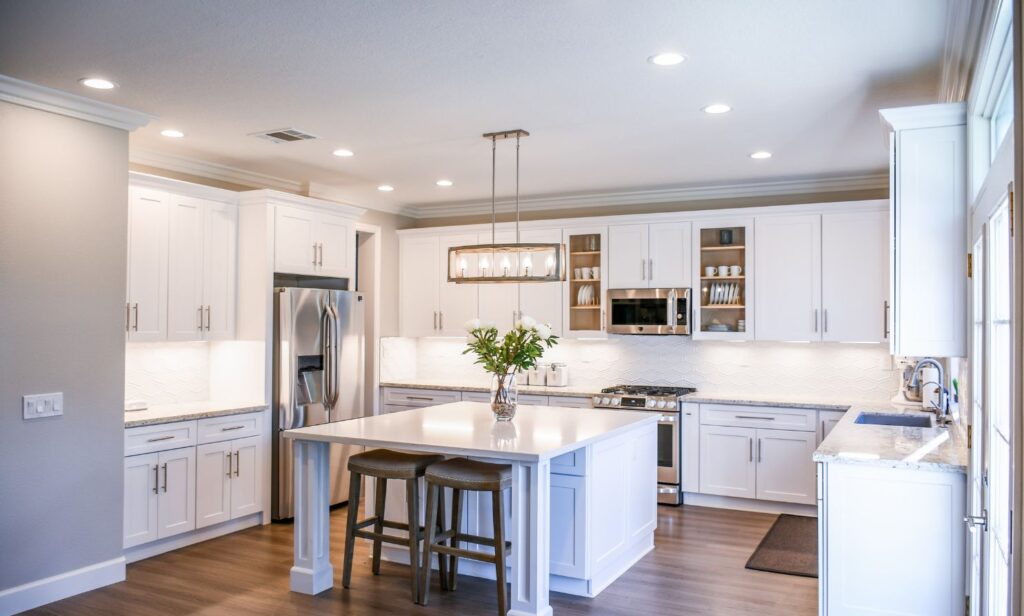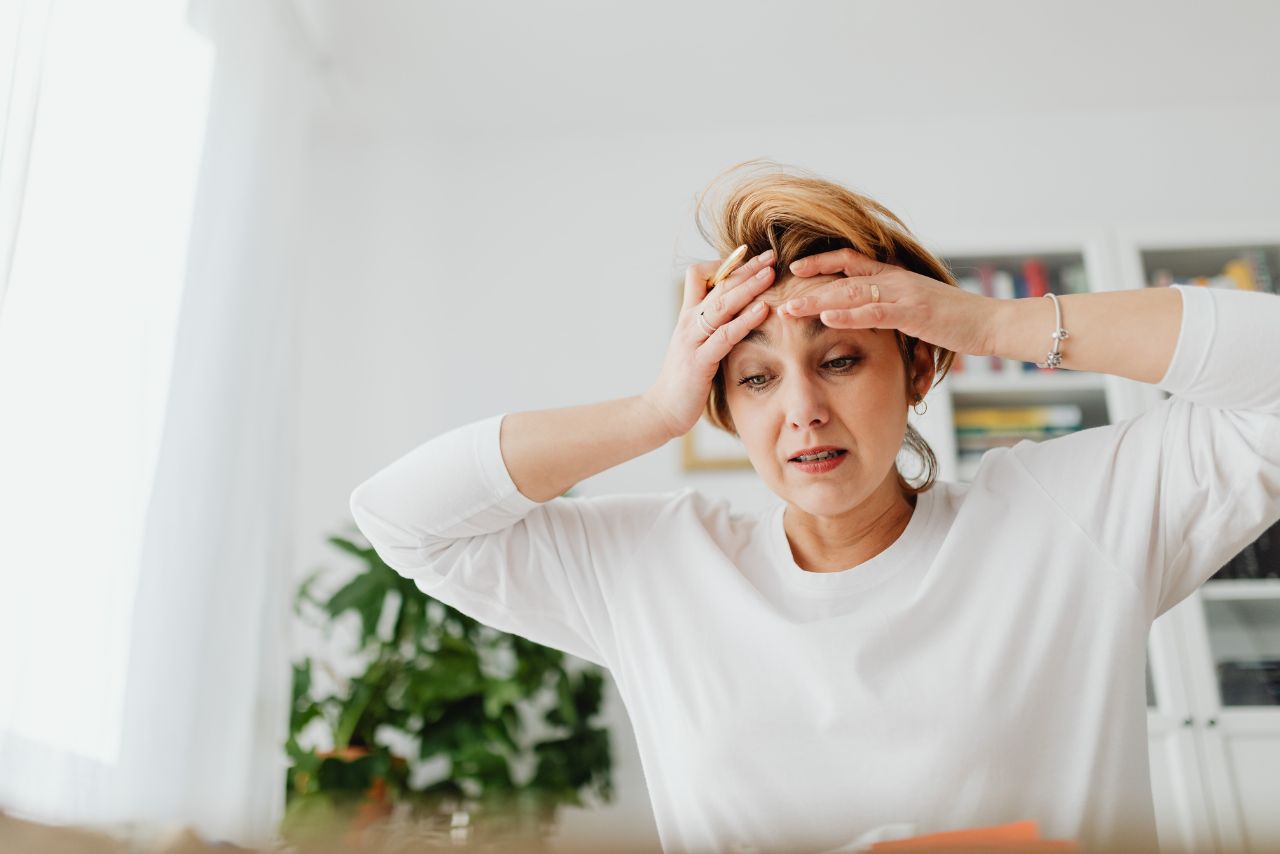
Our eyesight changes as we get older, which is a normal part of life. You may notice that your eyes are not as sharp as they used to be as you get older. This can make normal things a little harder to do.
This does not mean you have to give up on the aesthetics or functionality of your home. Even though things are changing, your home should still be a safe and comfortable place for you.
With the right decor choices, you can make your living space adaptable to your changing needs while still showing off your own style.
Let’s explore some practical home decor tips for aging eyes and how you can adapt your home decor for comfort, safety, and elegance.
The Impact of Aging on Eyesight
We can see things differently as we age because our eyesight changes. Some common changes include having trouble seeing small details, telling the difference between colors, needing more light to see clearly, and having trouble seeing well in dim light. As a result, these changes may make normal tasks harder or even cause accidents.
However, you can make your home more comfortable and safer for yourself when you understand these changes.
One big change is that aging eyes need more light to see properly. Over time, the muscles in our eyes get weaker, which means they can not let in as much light as they used to. You may find it tougher to read small print or see things up close.
Well, research tells us that when we hit 60, we need twice as much light as we did when we were 30. That’s a lot more light!
Let’s break down some basics about our aging eyes:
- Reduced visual acuity: This means it’s harder to see small details, like tiny prints or fine lines.
- Reduced contrast sensitivity: It’s tough to distinguish between light and dark surfaces, making it tricky to see things clearly.
- Reduced color discrimination: Colors might not look as vibrant, and it takes longer for our eyes to adjust when there’s a sudden change in brightness.
Increased sensitivity to glare: Our eyes develop these little cloudy spots over time, making us more sensitive to bright lights that can scatter and create glare.
However, it is not just about having trouble seeing or having a different reaction to colors. Aging can also bring on eye diseases like macular degeneration, glaucoma, diabetic retinopathy, and cataracts. These can hurt our vision in many places, from the middle to the edges, and in the worst cases, they can even make us blind.
Home Decor Tips for Aging Eyes

Wondering how all this eye stuff affects how you decorate your home? Well, there are some nifty solutions to tackle any issues that pop up because of those aging eyes.
Here are some home decor tips for aging eyes you need to know.
1. Proper lighting
For aging eyes, good lighting may be the most important part of home decor. Good lighting can make it easier to see and do things by easing the strain on your eyes.
Adding more lights to your home can really work wonders. Think about popping in some extra lamps or fixtures in areas where you need to see well, like your kitchen or your favorite reading nook. The more light, the merrier!
If you want to be able to control the amount and direction of light in each room, you might want to use layered lighting. Ambient lighting gives off light all over, while task lighting directs light to places like reading nooks or kitchen counters where it is needed most.
Consider lamps with shades or fixtures with frosted bulbs to help soften those bright lights and make things easier on your eyes. It’s all about creating a cozy atmosphere. Position your lights to avoid window and shiny surface glare. Adjusting the angle or using shades can provide comfort for your eyes.
Buy lights with adjustable brightness to customize your lighting throughout the day. It’s like having your own personal lighting control!
Do not forget about natural light; it makes you feel better and is good for your eyes. Make sure the windows are clear, and think about using sheer curtains that let light in but still give you privacy.
2. Colors and contrasts
The colors you pick for your home can make a big difference for your aging eyes. Choosing the right colors isn’t just about making things look pretty; it can actually help you see better too!
Color schemes with a lot of contrast are hot right now. That means putting together colors that are very different from one another. Why? This is because it helps your eyes see what things are and where they are.
For example, look at your walls and furniture. Putting up dark furniture and painting your walls a light color can really help. This makes it seem like there is more space, which helps you see farther and more deeply.
Do not be afraid to use bright colors on gadgets and accessories! A neutral background with pops of bright colors can really make something stand out. This not only looks great, but it also makes little accidents less likely.
Remember that high contrast is your friend when you are choosing paint colors or new home decor. It is all about making your space look great and being very useful for those great eyes of yours that are getting older.
3. Furniture placement
How you arrange your furniture can make a world of difference, especially as our eyesight changes over time. It’s not just about making your home look good; it’s about making it work for you!
First things first, try to make a layout that makes things easier. That means keeping everything open and giving people a lot of room to move. There should not be too many things in the way, and it should be easy to get around. So, clear those paths and make sure there is plenty of space around your furniture so you can move around easily.
For your furniture, think about choosing pieces that are easy to get in and out of. Whether it’s a comfy chair or your bed, picking furniture that’s the right height and accessible can really make your daily routine a breeze.
Oh, and don’t forget about natural light! If you put your furniture where it will get the most natural light, it will be much easier to see. Not only does it help you see better, but it also makes the room feel warm and friendly.
With these in mind, you can create a home that’s not only functional but also super comfy and inviting.
4. Little details matter
The little things in your home decor can make a big difference. Trust me, it’s all about finding that perfect balance between style and functionality.
When it comes to accessories, bigger is definitely better. You can make your space look better and see things better by choosing things with big prints and lots of contrast.
Take, for example, your calendar or clock. If you choose ones with big, clear numbers and prints, it will be easy to check the time or date. And how about those remote controls? Look for ones with big buttons that are easy to press. This will make movie nights even more fun.
You are not only making your space look great by adding these big-print and high-contrast accessories, but you are also making sure that they are super useful for your aged eyes. Feel free to add those stylish touches, and then enjoy your beautifully useful home!
5. Clutter-free environment
Keeping your space clutter-free is super important, especially for your safety and comfort.
Clutter makes it hard to find things and raises the risk of tripping and falling. Thus, it is important to regularly declutter your space. You can find what you need faster and easier if you keep things clean. It also makes your eyes feel better.
Choose designs with simple shapes and clean lines that will not overpower your senses. That does not mean your space has to be dull, though! Even so, you can still add your own style by choosing pieces that make you happy. Your home should, after all, feel warm and inviting, free of clutter but full of your personality.
So, let us get rid of unnecessary things and make a safe, comfortable space just for you.
READ ALSO: 100+ Things To Declutter Before The End Of The Year
6. Open layouts
When you have aging eyes, it’s best to set up your home so it’s easy-peasy to move around. It’s all about making sure your space is super navigable and safe!
Go for open-floor plans. You can move around without running into anything with these, it is like a dream come true. They try to keep things as simple as possible and give you lots of room to move around. Do not worry if you can not get an open layout, though. As long as the hallways and doors are wide enough, you should be able to move around easily. Do not forget the lights either—good lighting is important to stay safe on the road.
Set up your transition spots, like entryways and thresholds. If they are not set up right, these can cause a lot of trouble! So let us make them free so that you can walk on them. In other words, there should not be any weird steps or annoying things in the way.
If you pay attention to these little things and set up your home so that it is easy to get around, you will be able to get around like a pro in no time.
7. Assistive devices and aids
When decorating your home, do not forget how important it is to include assistive devices and aids.
For example, grab bars in the bathroom, non-slip mats, and raised toilet seats can help people who need them and lower their risk of falling.
When choosing these aids, try to find ones that go with your home’s style so that everything looks like it belongs together.
It is now possible to prioritize safety without sacrificing style, as many companies make products that are both useful and fashionable.
8. Smart home devices
Technology can help you make your home more accessible for aging eyes. Smart home devices, like lights, thermostats, and security systems that you can control with your voice, can make your life easier and safer.
You don’t have to strain your eyes because many of these devices have large, easy-to-read screens or support voice commands.
So, take advantage of technology that can make your life easier and more fun.
Closing Thoughts
Changing the way your home looks to accommodate aging eyes does not have to mean giving up style or comfort. You can make a space that is both beautiful and useful with these home decor tips for aging eyes.
Do not forget to put night lights in important places like the bedroom, bathroom, and hallways. For nighttime reading, put a lamp next to your bed. Make sure there are clear paths to light switches, especially ones that are not near doorways.
For better visibility, think about getting switches that glow in the dark or are lit up. Before going up or down stairs, turn on the lights and think about getting motion-activated step lights for extra safety. Also, keep flashlights in places that are easy to get to in case the power goes out.
As you age, remember that the goal is to improve your quality of life by making sure your home stays a safe, comfortable, and happy place for you.
♡ Love ♡,
Schellea



















